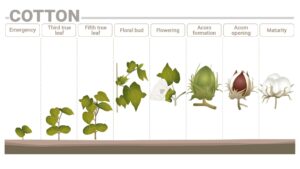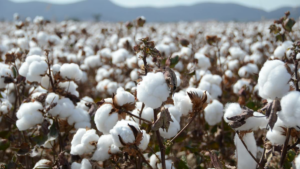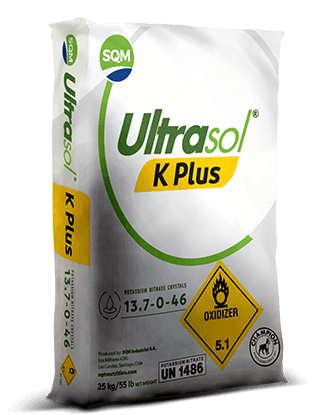Potassium nitrate in cotton
Higher yields & better quality
Earlier-maturing, faster-fruiting, higher -yielding, modern cotton varieties have a relatively high need for potassium in a relatively short period from flower initiation to boll maturation. Foliar sprays of potassium nitrate have consistently shown to meet this demand.
Stronger plants
Utilizing foliar potassium nitrate has shown to enhance the uptake of potassium into the plant. Potassium promotes the photosynthesis (more CO2 assimilation results in more sugars) and the transport of sugars from the leaf to the boll. These provide the energy for boll development and growth.
Foliar applications of potassium nitrate (13-0-46) are a proven tool in managing fast maturing high yielding cotton


Trials confirm consistently higher yields
Yields are consistently higher using foliar applied potassium nitrate to supplement the plant's requirement and the average of USA university research proves an increase in lint of 14.5% with 4 applications of 10 lbs KNO3/acre, totaling 40 lbs KNO3/acre.
A cotton plant's root system cannot keep pace with the high demand for potassium, especially around peak bloom, regardless of the amount of potassium in the soil. Since potassium is needed for the transportation of sugars that supply energy to the developing boll, deficiencies can be disastrous.
University data across the Cotton Belt have confirmed the efficacy of potassium nitrate in cotton production. Average lint yield increases of 112 pounds puts more money in grower's pockets. Stems, roots and bolls are affected by potassium deficiencies first. By the time symptoms are visible in the leaves yield is already lost. Foliar applications of potassium nitrate guided by timely tissue analysis, can prevent costly potassium deficiencies befare the sypmtoms even show up on the plant.
Benefits





